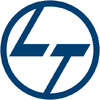Filter interviews by
Almarai Land Surveyor Interview Questions and Answers for Experienced
Almarai Land Surveyor Interview Experiences for Experienced
1 interview found

About survey questions
(3 Questions)
- Q1. What is horizontal curve
- Ans.
A horizontal curve is a curve on a road or railway track that allows vehicles or trains to smoothly transition from a straight path to a curved path.
Horizontal curves are used to improve safety and comfort for drivers or passengers by reducing the sharpness of turns.
They are typically found on highways, roads, and railways where the terrain requires a change in direction.
Horizontal curves are designed with specific rad...
- Q2. What is vertical curve
- Ans.
Vertical curve is a curve on a road or railway where the gradient changes gradually to ensure smooth transition between different grades.
Vertical curve is used in civil engineering to provide a smooth transition between different grades on a road or railway.
It helps in ensuring safety and comfort for drivers or passengers by reducing sudden changes in slope.
The curve is typically parabolic in shape, with the lowest poi...
- Q3. Who much maximum superelevation?
- Ans.
The maximum superelevation is typically limited to 12% on highways.
Maximum superelevation is usually limited to 12% on highways.
Superelevation is the banking of a road or railway track around a curve to counteract the effects of centrifugal force.
Exceeding the maximum superelevation can lead to safety hazards for vehicles.
Top trending discussions






Interview questions from similar companies

I applied via Referral and was interviewed before Feb 2023. There was 1 interview round.
(2 Questions)
- Q1. Previou experience
- Q2. Work experience
Interview Preparation Tips
- Poultry

Interview Questionnaire
2 Questions
- Q1. Related to survey
- Q2. Civil survey infrastructure
I applied via Walk-in and was interviewed in Jan 2022. There were 2 interview rounds.

(3 Questions)
- Q1. What is least count of total station
- Ans.
The least count of a total station is the smallest measurement that can be accurately read or recorded by the instrument.
The least count is determined by the precision of the instrument's internal components.
It is typically expressed in units of distance, such as millimeters or seconds of arc.
For example, if the least count of a total station is 5mm, it means that the instrument can measure distances accurately to the ...
- Q2. What is height of mini prism
- Ans.
The height of a mini prism varies depending on the manufacturer and model.
Mini prisms are used in surveying to measure distances and angles.
The height of a mini prism is typically between 25mm to 50mm.
The height of a mini prism can affect the accuracy of the surveying measurements.
It is important to use the correct height of mini prism for the specific surveying task.
Manufacturers usually provide the height of their mi
- Q3. What is least count of auto level
- Ans.
The least count of an auto level is the smallest measurement that can be read on the instrument.
The least count is determined by the size of the divisions on the instrument's scale.
It is usually expressed in millimeters or fractions of an inch.
For example, if the least count is 0.5 mm, the instrument can measure differences in elevation of 0.5 mm or greater.
The least count can vary depending on the make and model of th
Interview Preparation Tips
(5 Questions)
- Q1. Topography survey
- Q2. Lay out coordinate
- Ans.
Laying out coordinates involves marking specific points on the ground based on their x, y, and sometimes z values.
Use a total station or GPS device to accurately measure and record coordinates
Mark points with stakes, flags, or paint for future reference
Ensure coordinates are recorded in the correct datum and projection for accurate mapping
- Q3. Auto level for elevation
- Ans.
Auto level is a surveying instrument used to measure height differences in the field.
Auto level uses a compensator to ensure accurate readings even on uneven terrain.
It is commonly used in construction, land development, and road building projects.
The instrument is set up on a tripod and the surveyor looks through the eyepiece to read the height difference on a graduated staff.
Auto levels are preferred for their ease o...
- Q4. Trivers for taget point
- Ans.
Trivers for target point refers to the process of using trigonometry to calculate the coordinates of a specific point on a surveying site.
Trivers formula involves using angles and distances to calculate the coordinates of a target point.
It is essential for accurate land surveying and mapping.
Example: If you have the angle and distance measurements from two known points, you can use Trivers formula to calculate the coor
- Q5. Tp point for set out
- Ans.
A point for set out is a reference point used by surveyors to mark the location of specific points on a site.
Set out points are typically marked with stakes, nails, or paint on the ground.
These points are used to guide construction workers in accurately placing structures or boundaries.
Surveyors use measurements and calculations to determine the exact coordinates of set out points.
Interview Preparation Tips

Interview Questionnaire
14 Questions
- Q1. I am Mr. Rinku yadav
- Q2. Land surveyo job in Raipur chhatteesagadh
- Q3. Land surveyo layaut prograam
- Q4. Auto cad & all surveyo Point my responsebliti
- Q5. For building to Constitution side
- Q6. To line marking auto level leveling
- Q7. For other pointa land scaping
- Q8. To drange to ceber line to catch bacen line
- Q9. For chaimber Point to
- Q10. All question
- Q11. Soil leveling
- Q12. Road marking
- Q13. To road & karv stone
- Q14. Point all marking
Interview Preparation Tips
I applied via Referral and was interviewed in Oct 2021. There was 1 interview round.
Interview Questionnaire
1 Question
- Q1. How many year of experience do you have
Interview Preparation Tips
Interview Questionnaire
1 Question
- Q1. How to work on side with Total station
- Ans.
Working on site with a Total Station involves setting up the instrument, taking measurements, and recording data.
Set up the Total Station on a stable tripod at a known point on the site.
Calibrate the instrument by leveling it and orienting it to true north.
Take measurements by aiming the Total Station at specific targets and recording the angles and distances.
Use the data collected to create accurate maps, plans, or bo...
I applied via Walk-in and was interviewed in Mar 2022. There were 2 interview rounds.

(1 Question)
- Q1. What are your salary expectations?
Interview Preparation Tips

Land Surveyor Interview Questions & Answers
Gammon Engineers And Contractorsposted on 14 Dec 2019
I applied via Recruitment Consultant
Interview Questionnaire
2 Questions
- Q1. I am MOHAMMAD WAQUAR ALAM
- Q2. I am MOHAMMAD WAQUAR ALAM i have 6 years Abroad experience also 3 years india experience total experience 9 years
Interview Preparation Tips
Almarai Interview FAQs
Tell us how to improve this page.
Almarai Interviews By Designations
- Almarai Heavy Driver Interview Questions
- Almarai Maintenance Technician Interview Questions
- Almarai Plumber Interview Questions
- Almarai Dairy Technologist Interview Questions
- Almarai Executive Interview Questions
- Almarai Mechanic Diesel Interview Questions
- Almarai Stock Controller Interview Questions
- Almarai Land Surveyor Interview Questions
- Show more
Interview Questions for Popular Designations
- Surveyor Interview Questions
- Quantity Surveyor Interview Questions
- Senior Land Surveyor Interview Questions
- Senior Surveyor Interview Questions
- Senior Quantity Surveyor Interview Questions
- Civil Surveyor Interview Questions
- Assistant Quantity Surveyor Interview Questions
- Civil Quantity Surveyor Interview Questions
- Show more
Almarai Land Surveyor Interview Process for Experienced
based on 1 interview
Interview experience
Interview Questions from Similar Companies
Almarai Land Surveyor Reviews and Ratings
based on 1 review
Rating in categories
|
Team Manager
25
salaries
| ₹10 L/yr - ₹20 L/yr |
|
Maintenance Technician
24
salaries
| ₹4 L/yr - ₹13 L/yr |
|
Senior Team Manager
15
salaries
| ₹15 L/yr - ₹31 L/yr |
|
Automation Engineer
13
salaries
| ₹12 L/yr - ₹15 L/yr |
|
Team Lead
13
salaries
| ₹8 L/yr - ₹18 L/yr |

Cargill

Mother Dairy Fruit & Vegetable

Mondelez International

Perfetti Van Melle
- Home >
- Interviews >
- Almarai Interview Questions >
- Almarai Land Surveyor Interview Questions for Experienced












